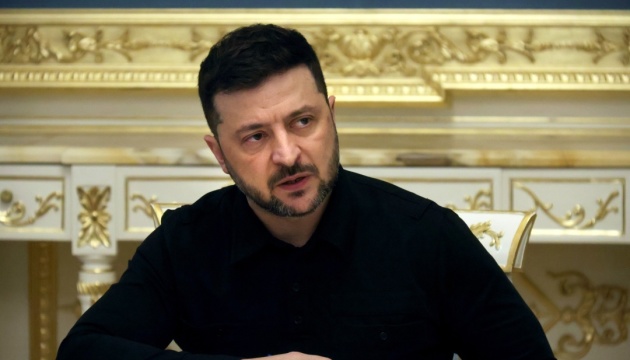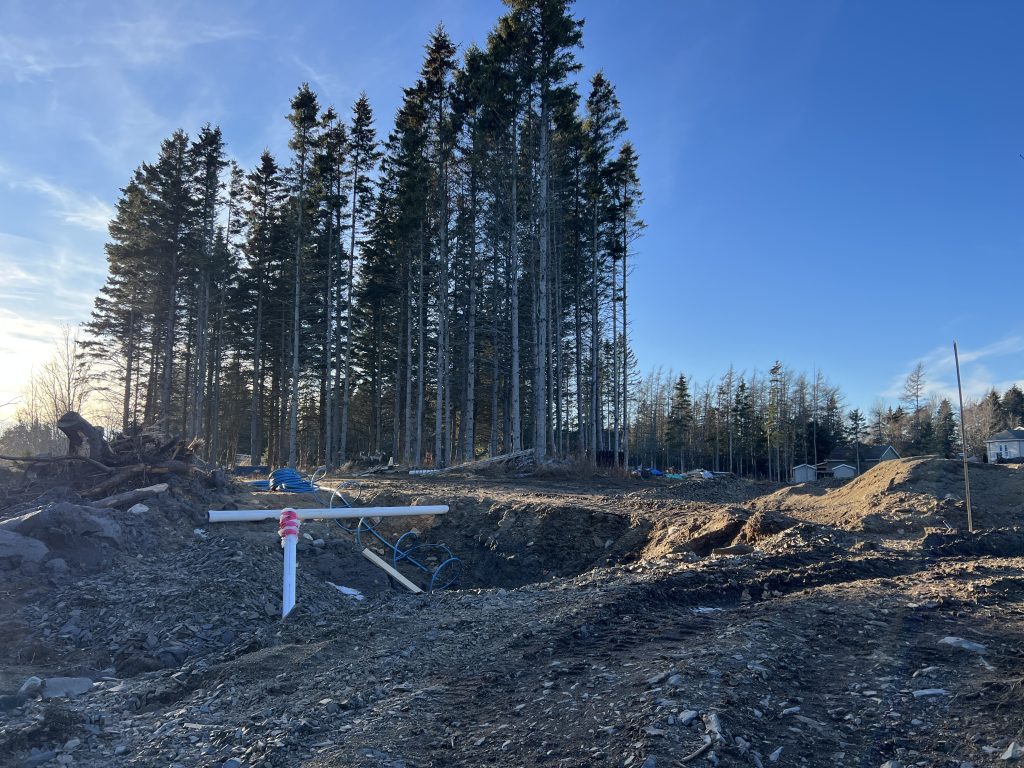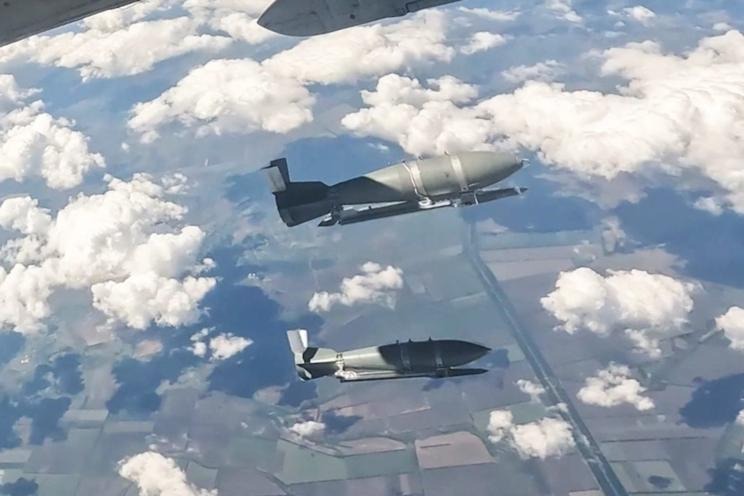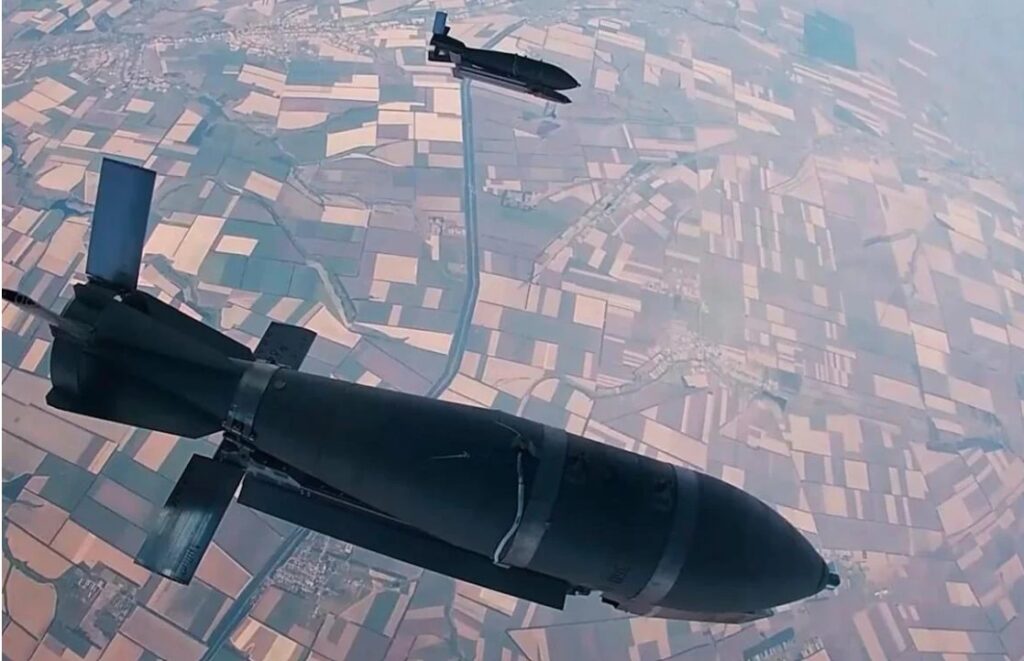Trump Administration to Reduce Flight Cuts at Airports Imposed During Shutdown

© Dave Sanders for The New York Times


© Dave Sanders for The New York Times






Les travaux de reconstruction de la route 132 et d’une nouvelle structure au-dessus de la rivière Mitis, en remplacement du pont Arthur-Bergeron, à Sainte-Flavie et à Grand-Métis, débutent officiellement.
La ministre responsable du Bas-Saint-Laurent, Amélie Dionne, en a fait l’annonce ce vendredi, au nom du ministre des Transports et de la Mobilité durable, Jonatan Julien.
Le projet, qui totalisera des investissements d’un peu moins de 100 M$, permettra d’accroître la sécurité des usagers de la route 132 sur environ 2 km, entre le parc de la rivière Mitis et la route 234, grâce à la géométrie du nouveau tracé.
En effet, l’intersection de la route 132 et du chemin Perreault sera déplacée vers l’ouest, dans le but d’optimiser la visibilité dans ce secteur. Le pont Arthur-Bergeron actuel, construit en 1930, sera restauré dans le respect de son caractère patrimonial, avant d’être cédé à la MRC de La Mitis.

« En tant que ministre responsable du Bas-Saint-Laurent, je suis particulièrement fière de voir ce projet prendre forme. La modernisation de la route 132 et la construction d’un nouveau pont au-dessus de la rivière Mitis sont des gestes concrets qui montrent l’importance que notre gouvernement accorde au développement des infrastructures dans nos régions. Ces travaux, attendus depuis longtemps dans toute la région, viendront améliorer la sécurité et la qualité de vie des gens d’ici, tout en soutenant la vitalité de nos communautés locales », déclare la ministre Amélie Dionne.
D’ici les prochaines semaines, des activités de déboisement et le déplacement de certaines infrastructures de services publics se poursuivront. Les travaux d’excavation et de terrassement débuteront au cours de l’hiver. Des voies de déviation temporaires seront aussi aménagées au printemps afin de permettre le maintien de la circulation durant les travaux. Par la suite, la construction de la chaussée et de la structure se mettra en branle.
Les travaux de construction du nouveau tronçon de la route 132, incluant le nouveau pont, seront d’une durée d’environ quatre ans. La restauration du pont Arthur-Bergeron devrait s’échelonner sur deux ans.
« Le début des travaux marque une étape importante pour la pérennité de cette route essentielle au développement économique, social et touristique de l’est du Québec. En plus d’améliorer la sécurité routière, cet investissement témoigne de notre volonté à moderniser nos infrastructures afin qu’elles répondent aux besoins actuels et futurs de la population », affirme le ministre Jonatan Julien.
En moyenne, 6 200 véhicules circulent dans ce secteur de la route 132 quotidiennement.


Discreet, determined and unafraid of a fight, Lise Bacon entered politics to change the world. She loved Quebec first and foremost, believed in a united Canada and worked hard throughout her career to ensure that people were protected, be they consumers, children or the unemployed.
No matter if it was as a young political activist, a provincial Liberal minister in the cabinet of premier Robert Bourassa, Quebec’s first-ever female deputy premier or during her long stint as a federal senator, Ms. Bacon, who died on Oct. 29 in Montreal at the age of 91, mastered each file she was in charge of so she could defend it on the fly.

L'attaquant de 23 ans a inscrit 9 buts en 13 matchs dans la Ligue américaine (AHL) cette saison.


Le ministère public doit divulguer la valeur cible, mais il n'a pas à la prouver, selon la majorité des juges.


Le retour à la normale va survenir juste avant les grands départs pour les festivités de Thanksgiving.


Le chef du Parti conservateur du Québec, Éric Duhaime, est en « opération séduction » avec la députée indépendante de Rimouski, l'ex-ministre caquiste, Maïté Blanchette Vézina, qui a accepté cette semaine de collaborer avec la formation politique. Comme l'explique la journaliste Isabelle Damphousse, Éric Duhaime souhaite que l'ex-ministre caquiste rallie les rangs du Parti conservateur, mais les électeurs rimouskois sont plutôt perplexes.


Maïté Blanchette Vézina défend sa collaboration avec le Parti conservateur du Québec et indique qu'elle va travailler avec tous les partis qui souhaitent porter les intérêts des régions. Charles Alexandre Tisseyre en a discuté avec la députée indépendante de Rimouski vendredi après-midi.



© Kaiti Sullivan for The New York Times


© Francis Chung/Politico, via Associated Press






/2025/11/14/063-2246565654-6917b12199ef9026898819.jpg)
/2025/11/14/063-2246565654-6917b12199ef9026898819.jpg)

Un vaccin payant ne peut pas être légalement utilisé à la place d’un vaccin gratuit, explique un pharmacien.



La Municipalité de Sainte-Luce a suspendu les travaux pour la construction d’un camping de 20 places et de deux résidences, le long de la route 132. En tout, 700 arbres ont été coupés alors que le permis autorisait d’en abattre 290.
C’est ce qu’indique un rapport du Groupement forestier Métis-Neigette. La Municipalité veut s’assurer de la sécurité des citoyens et des employés qui travaillent sur le chantier tout en validant l’expertise géotechnique fournie par le promoteur, Carl Ferlatte. Le site se retrouve dans une zone à risque de glissement de terrain.
« C’est un plateau avec des mouvements de sols. Il faut être certain que tout est bien stable avant d’installer, de creuser ou de faire toute opération. Il faut s’assurer de la sécurité de tous, incluant les citoyens qui vivent en bas de la pente », exprime la nouvelle mairesse de Sainte-Luce, Yolande Hould.

Cette dernière et ses conseillers municipaux, tous élus le 2 novembre dernier, veulent également s’assurer que toutes les étapes ont été bien respectées. Une demande a été faite à la Sécurité publique pour vérifier la conformité du dossier.
« Nous allons suivre le processus pour déterminer s’il a été fait correctement. Nous le refaisons au complet en vérifiant que tout est conforme. C’est le ministère de la Sécurité publique qui va nous indiquer si tout est correct pour pouvoir rassurer la population. »
L’aspect environnemental est une grande préoccupation pour Sainte-Luce. Le trop grand nombre d’arbres coupés sur le site du futur terrain de camping, situé au-dessus de l’Anse-aux-Coques sur la route 132 Ouest entre la rue Luce-Drapeau et la rue des Villas, amène des questionnements.

« C’est beaucoup plus d’arbres que ce qui était alloué dans les permis. Nous voudrions que ce soit réglé le plus rapidement possible, mais nous sommes en attente des résultats des tests du ministère de la Sécurité publique », explique madame Hould.
Lors de l’annonce du projet, plusieurs citoyens de Sainte-Luce avaient démontré leur inquiétude. Bien qu’aucune démarche judiciaire n’ait été entreprise, la Municipalité reçoit l’aide d’un avocat pour la guider dans ses actions.


 |
One long-term strategy could stop Russia’s glide bombs—but demands a painful choice. As many as 5,000 Russian glide bombs rain down on Ukraine every month. How can the Ukrainians slow the lethal rain? |
 |
Ukraine’s quick fix for Energoatom scandal may gut critical reforms. How the government responds will determine if this scandal only affects Energoatom or every other state company, destroying years of hard-won reforms. |
 |
Ukraine’s blackouts were avoidable. Energoatom corruption and political vendetta made them inevitable.. The blueprint existed. The funding existed. What happened instead reveals an institutional collapse more damaging than Russian missiles alone. |
2,000+ Russian drones, 150+ missiles hit Ukraine's energy grid as repair workers operate "like ants" between emergencies Rolling blackouts affect multiple regions as workers coordinate rapid repairs on generation sites, transmission lines, and gas infrastructure damaged in the October-November assault.
Ukraine's Long Neptune missile, drones hit Russian oil terminal and air defenses in Novorossiysk Observers tracking open-source footage linked some of the strikes to a military unit housing S-300 or S-400 systems. NASA FIRMS confirmed fires across Novorossiysk.
Ukrainian drone swarm strikes occupied Donetsk, triggering fires and power outages (VIDEO) Residents reported intense anti-aircraft fire as drones circled the city for hours.
Frontline report: Ukraine executes textbook deception maneuver to reinforce embattled Myrnohrad Massive Ukrainian counterattacks along the Dobropillia frontline forced Russian forces to shift from offense to defense, creating a critical window for Ukrainian troops to rotate forces and deliver vital supplies to defenders in Myrnohrad.
ISW: Russia masses nine brigades on a 41‑kilometer strip — Huliaipole axis in Zaporizhzhia Oblast faces major pressure (MAP) Russian forces are pushing deeper toward Zaporizhzhia's Huliaipole and Dnipropetrovsk Oblast's Velykomykhailivka, using airstrikes and bad weather to blind Ukrainian drones.
Ukraine's homegrown 'Octopus' anti-Shahed interceptor drone enters mass production Combat-proven system operates at night, under electronic jamming, and at low altitude to counter conditions that strain standard air defenses.
Ukrainian intelligence derails Trans-Siberian Railway 6,600 km from Ukraine, hits North Korean weapons route (VIDEO) HUR released video showing explosive placement and detonation near Sosnovka in Khabarovsk Krai, disrupting a key corridor for weapons from North Korea.
"Ukraine's security is directly connected to ours" – 8 Nordic-Baltic countries pool $500M weapons package Package includes HIMARS rockets, air defense systems, and precision weapons sourced through NATO's PURL initiative to counter intensifying Russian strikes.
Reuters: US firm Carlyle seeks to buy Russia's Lukoil foreign assets Reuters reveals the US Treasury killed the Swiss trader's bid, paving the way for an American takeover.
Russia trains drone operators by hunting Ukrainians in Kherson streets – Zelenskyy President vows "special solutions" as Russian forces use frontline cities as live-fire training grounds.
Russia launches massive air attack on Kyiv, killing 6 and wounding 36 civilians across the capital—children and pregnant woman among the injured (UPDATED) The Air Force says Moscow launched 430 drones and 19 missiles. More were killed in Odesa Oblast, while damage to power and other infrastructure facilities is reported across several regions.
Read our previous daily review here.

The Russian air force is lobbing as many as 5,000 glide bombs at Ukrainian positions every month, including some bombs weighing 3,000 kg. Just one of those aerial monsters is powerful enough to flatten a high-rise building.
The glide bombs blast holes in Ukrainian defenses, disrupt military logistics, and terrorize everyday Ukrainians living near the front line, leveling entire apartment buildings in one go.
In the battle for Pokrovsk, Russian forces drop up to 450 glide bombs per week on a single sector, destroying fortified strongpoints that Ukrainian forces spent months building—and allowing Russian infiltration. One FAB-3000 bomb can completely obliterate a fortified position, turning Ukrainian defensive networks into rubble and forcing troops into open fields where they become easier targets.
There are measures Ukrainian forces can take to blunt the relentless bombardment—but none are cheap. And some could take months if not years to have any meaningful effect.
Recent footage from the front line in Myrnohrad, in eastern Ukraine's Donetsk Oblast, dramatically illustrates the power of Russia's glide bombs, which range as far as 65 km on pop-out wings and satellite guidance. Russian industry developed the glide bomb kits in early 2023 in response to heavy Russian air force losses during close bombing sorties.
Glide bombs are a truly terrifying weapon. A Ukrainian soldier fighting in Konstantinivka told me about a FAB-3000 (as in, it weighs 3,000kg) hitting a nine-story apartment building next to his position. Leveled it to the ground in one go. https://t.co/SvTqljWqnv
— Neil Hauer (@NeilPHauer) November 13, 2025
The recent footage depicts a 1,500-kg or 3,000-kg glide bomb striking a multi-story building—and demolishing it.
"Glide bombs are a truly terrifying weapon," Canadian journalist Neil Hauer explained. He recalled a story about 3,000-kg glide bombs striking an apartment building in Kostiantynivka, in eastern Ukraine. "Leveled it to the ground in one go," Hauer wrote.
The inexpensive glide bombs, each costing just a few tens of thousands of dollars, dramatically reduce Russian warplanes' exposure to the most dangerous Ukrainian air defenses. Instead of attacking from directly overhead, planes could attack from 40 km (with the first generation of glide bombs) or from 65 km (with a newer generation that debuted this year).

It's no coincidence that, as Russia's hundreds of Sukhoi Su-30 and Su-34 fighter-bombers switched to glide bombing since 2023, the rate of loss for both types has declined. Since Russia widened its war on Ukraine in February 2022, the Russian air force has written off around 15 Su-30s and around 40 Su-34s.
More than 250 of the jets remain in service—and Sukhoi continues to deliver replacement airframes at a rate of a couple of dozen a year.
Ukrainian forces aren't defenseless. They can:
But jamming requires constant adaptation as the Russians add more and more satellite navigation receivers to successive generations of glide bombs. Long-range air defenses are in short supply as the Ukrainian air force prioritizes the defense of major cities and power plants against the most damaging Russian cruise missiles and ballistic missiles.

Disrupting the Russian aerospace industry is a long-term solution to the glide-bomb threat.
Flying nearly daily glide-bombing sorties, the Russian Su-30s and Su-34s have "built up significant fatigue hours" on their metal airframes, analysts Nikolay Staykov and Jack Watling wrote in a new study for the Royal United Services Institute in London. Warplanes are built tough, but they can become unreliable and unsafe after a few thousand flight hours.
More and more Russian jets are reaching that dangerous threshold. The recent crash of an Su-30 may underscore that risk.

Ukraine and its allies can accelerate the decline of the Russian fighter fleet and slow the pace of glide bombings—by strangling Sukhoi and its suppliers with sanctions, and directly attacking the most critical production facilities with long-range attack drones.
The aerospace industry in Russia is uniquely vulnerable.
"Because of the number of precision subcomponents necessary to assemble fighter aircraft, even minor delays and disruption to production have a significant knock-on impact in suppressing the acceleration of aircraft production," Staykov and Watling wrote.
If Ukraine's allies can close gaps in sanctions on Russia's aerospace industry to cover all tiers of suppliers and, equally importantly, properly enforce the sanctions, it could "reduce the threat" from the Kremlin's glide bombers by reducing the number of flyable planes.
It wouldn't happen quickly, of course. It could take years before fatigue grounds a significant portion of the Su-30 and Su-34 fleet. Drone strikes on the factories could speed up the degradation by driving the production rate of new jets closer to zero.

But an intensive effort to drone Russian aerospace plants might have the unintended consequence of taking the pressure off the oil industry—and boosting Russia's wider economy.
At present, Kyiv aims most of its long-range drones at Russia's oil industry. The oil campaign has disabled 20% of Russia's oil refining, forced a VAT hike, and driven Moscow's National Wealth Fund toward exhaustion by 2026—"the most efficient thing Ukraine can do" to hurt Russia's war machine, as one economist says.
But every drone aimed at an oil refinery is a drone not aimed at aircraft factories building the bombers that drop 5,000 glide bombs monthly. Pivoting to strikes on airplane factories focus might reduce bombardment in two or three years, if it works. Every month of delay means 5,000 more bombs.


© Graham Dickie/The New York Times


© Francis Chung/Politico, via Associated Press


© The New York Times




© Graham Dickie/The New York Times





Reste maintenant à voir si Bruxelles acceptera les engagements détaillés du géant de la tech.


Selon l'opposition, plus de 1000 personnes ont été tuées lors des manifestations.


Le dépouillement judiciaire confirme l’élection de Marc Brunelle au poste de maire de Saint-Mathieu-de-Rioux.



Russian forces are using civilians in Kherson and other frontline cities as live targets to train drone operators, Ukrainian President Volodymyr Zelenskyy said on 15 November, referring to the systematic killings of Russia’s "human safari" terror tactic.
The attacks serve a dual purpose for Russia: terrorizing Ukrainian civilians who resist their forces while providing real-world training for drone operators, transforming Kherson and other cities into live-fire training grounds.
"They are essentially conducting a 'human safari' and training drone operators through the killing of Ukrainians on the streets, on the roads," Zelenskyy said in his evening address. "We need more protection and more of our own active operations."
The president singled out Russian units targeting Kherson, Nikopol, and other cities within easy reach of occupied territory.
"They are tormenting our cities, tormenting our people," he said. "We are preparing special solutions that can strengthen our defenses, particularly in those regions and inflict greater losses on the occupier - especially on those Russian units" conducting the attacks.
Since summer 2024, Russian forces have conducted what Kherson residents call "human safari" - using small FPV drones equipped with cameras to track individual pedestrians, cyclists, and drivers, then drop explosives directly on them.
The UN confirmed in October 2025 that these attacks constitute crimes against humanity. Russian forces deliberately target civilians, ambulances, and first responders across over 300 kilometers of territory along the Dnipro River.
Kherson experiences thousands of drone strikes monthly, with Russian military social media channels openly posting videos of the attacks and referring to them as a "hunt."
Russia has already killed 2877 Kherson civilians in its drone safari. And the ticker is rising each day.
— Euromaidan Press (@EuromaidanPress) October 25, 2025
Each of the dots is a geoconfirmed, prooflinked case of deliberate Russian murder against old ladies, children, and first responders in Khersonhttps://t.co/vH43rDMjeV pic.twitter.com/XCpTWdUffz
Zelenskyy announced expanded deployment of Ukraine's Unmanned Systems Forces, including the elite Magyar's Birds unit, with additional resources allocated to counter the threat.
Starting 1 December, Ukraine will launch an electronic points system for evacuating wounded soldiers using ground robotic complexes. "We are also fully ensuring direct financing for brigades for their needs - for drones, for procuring components," the president said.
The announcement came after Zelenskyy's recent visit to Kherson, where he met with military leaders and drone units to review defense measures for the city three years after its liberation from Russian occupation.



